
Bonus Robot Projects!
Thanks so much for joining me for the teleclass! On this page you'll find the videos for the robots that we covered in class, plus a few extras. Enjoy!
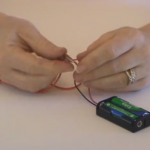 How to Wire Up a Basic Circuit
How to Wire Up a Basic Circuit
Have you ever wanted to learn how to wire up a basic circuit? I’ll show you how and also how to make sure you don’t have a battery meltdown while doing it!
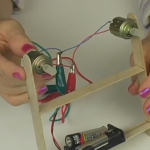 Cable Car
Cable Car
We're going to make a durable cable car that can travel as long as you have string for it to move along! It's really a cool and simple project, and you can add cups or berry baskets below to transport cargo.
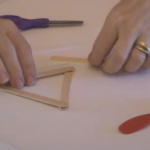 Propeller Race Car
Propeller Race Car
We're going to use a propeller on our basic race car chassis (frame) to see how much thrust we'd need to make it move. If you don't want to make the fancy triangle-shaped body frame, you can substitute a foam block or two (which will make your car able to go in water, too!)
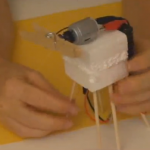 Jigglebot
Jigglebot
Kids can make this robot in less than five minutes, but it will take hours to get all their modifications and adjustments just right. This robot works by wobbling, and the sloppier the kids are in their construction, the better the robot dances around.
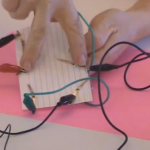 DPDT Switch
DPDT Switch
This double pull double throw switch will enable you to turn your motor off and when you turn it back on, reverse its direction all through the same switch.
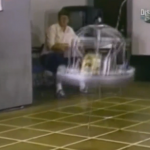 MIT Robotics Video
MIT Robotics Video
Watch MIT's one-legged robots and see how they perform amazing feats!
How to Wire Up a Basic Circuit
Cable Car
A cable car transports people or things in a vehicle that uses a strong cable to pull at a steady speed. Also called aerial lift, aerial tramway, or gondola, these are different from the cable cars associated with San Francisco, which use buried cables to move the car up steep streets.
The world's longest working cable car is in Sweden and covers 26 miles. Sweden used to operate a 60-mile cable car, but only a 8.2 miles (13.2 km) of it still works today, however this section is the longest passenger cable car in operation currently.
We're going to make a durable cable car that can travel as long as you have string for it to move along! It's really a cool and simple project, and you can add cups or berry baskets below to transport cargo. Here's what you need to do:
Materials
- 6 popsicle sticks
- AA battery case with 2 batteries
- two 3VDC motors
- tack
- scissors
- string
- hot glue gun
- glue stick for glue gun and also another one for use in the project itself (watch the video)
- two alligator clip wires (four if your motor does not have wires comes out the end but tabs instead)
Propeller Race Car
The great news is that many of the problematic airplane troubles were figured out a long time ago by two amazing people: the Wright brothers.
The Wright brothers also took an airfoil (a fancy word for “airplane wing”), turned it sideways, and rotated it around quickly to produce the first real propeller that could generate an efficient amount of thrust to fly an aircraft.
Before the Wright brothers perfected the airfoil, people had been using the same “screw” design created by Archimedes in 250 BC. This twist in the propeller was such a superior design that modern propellers are only 5% more efficient than those created a hundred years ago by the two brilliant Wright brothers.
We're going to use a propeller on our basic race car chassis (frame) to see how much thrust we'd need to make it move. If you don't want to make the fancy triangle-shaped body frame, you can substitute a foam block or two (which will make your car able to go in water, too!)
Materials
- 4 popsicle sticks
- 2 straws
- 4 wheels or lids from film canisters, or milk jug lids (anything plastic, round, and about the size of a quarter)
- 1 propeller
- 2 skewers
- 1 film can or foam block
- 3VDC motor
- AA battery case with AA batteries
- 2 alligator clip lead wires
- hot glue gun with glue sticks
Jigglebot
Ever wonder how a cell phone vibrates? What mechanism could be in such a tiny space to make the entire phone jiggle around? Well, there’s a tiny motor inside with an off-center weight on the shaft, called an eccentric drive.
You can still see eccentric drive mechanisms in older steam engines where the rotational motion is converted to liner? movement. Eccentrics are also found on tandem bicycles with timing chains.
Kids can make this robot in less than five minutes, but it will take hours to get all their modifications and adjustments just right. This robot works by wobbling, and the sloppier the kids are in their construction, the better the robot dances around. Play with the placement of the weight (battery pack) and the legs. Add more skewers, adjust their position and angle until you get it dancing without toppling over.
Materials
- 10 (or more) skewers
- foam block
- 3VDC motor
- wooden clothespin
- AA battery case with AA batteries
- 2 alligator clip lead wires
- hot glue gun with glue sticks
- Optional: gear that fits onto the motor (you can alternately drill a hole in the clothespin as shown in the video)
Start building your dancing jigglebot by watching this video:
Most kids will make the legs parallel to the vertical, but quickly find that having the skewers flared out makes for a more stable design. Some jigglebots will spin in circles, others just stand and shake, and still others will zip off at a good pace in a straight line. We use a clothespin so you can add more weight (clip something inside the clothespin) if you need to.
Tip: The 'sloppier' kids build this robot, the better it moves. Enjoy!
